All products featured are independently chosen by us. However, SoundGuys may receive a commission on orders placed through its retail links. See our ethics statement.
Best neckband earbuds
January 23, 2024





Take SoundGuys’ quiz to find your best fit
Neckband earbuds serve as a comfortable wireless option for listeners not yet ready to make the leap to true wireless earbuds or feel that conventional wireless earbuds are too unwieldy. There are plenty of options out there, but we’ve highlighted the absolute best for athletes, iPhone users, general consumers, and more, so you can spend more time listening and less time researching.
What's new?
- We updated this article on January 23, 2024, to ensure the timeliness of the information within.
For the best neckband earbuds, go with the Beyerdynamic Blue BYRD (2nd generation)
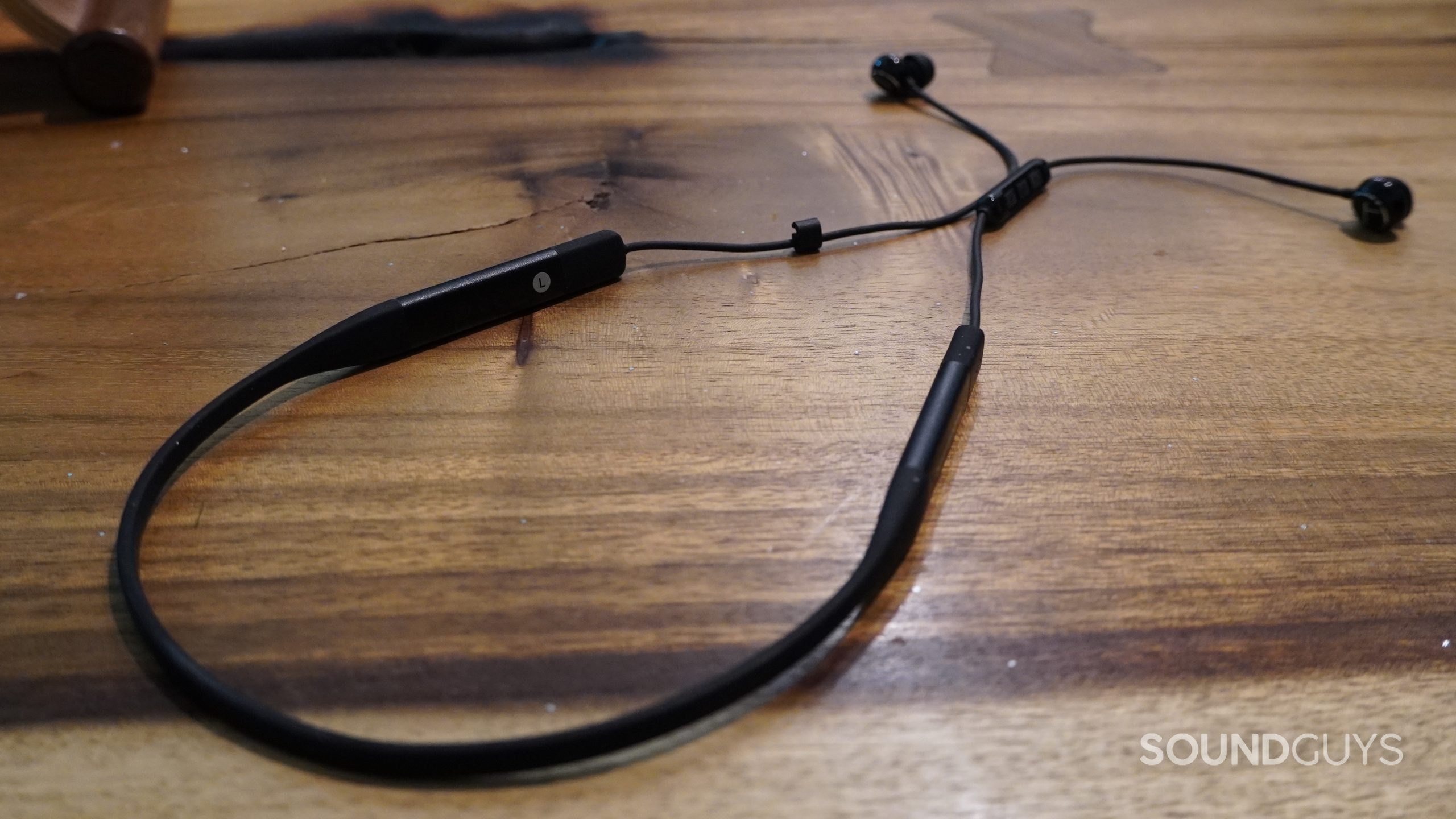
The Beyerdynamic Blue BYRD (2nd generation) is a great headset for listeners who typically want good sound quality in a premium package. This Bluetooth 5.2 headset supports SBC, AAC, and aptX streaming for high-quality audio on any device. You even get Bluetooth multipoint connectivity to keep an ear on two devices simultaneously.
The neckband is much sturdier than the first-gen Blue BYRD and evenly distributes weight across the base of your neck and collarbone. You can coil the neckband and earbuds up into the zippered carrying case to take it with you, but it can’t compact as much as a pair of true wireless earbuds might. Since this is a relatively new release, the neckband houses a USB-C (rather than micro-USB) charging port. Plus, if, like most of us, you can’t afford the Beyerdynamic XELENTO Wireless 2 (), you’ll still have your audio needs met with the BYRD (2nd generation).
You can customize the sound to some degree through the MIY Beyerdynamic app, but there’s no custom EQ. Still, the default frequency response closely follows our consumer curve and should please most people. You get pleasantly amplified bass and treble notes with a slightly quieter midrange response.
We recorded nearly 12 hours of constant playback from the Blue BYRD (2nd generation), which falls short of the 14-hour battery life but outperforms that of any true wireless competitors. If you want a great pair of neckbands and don’t mind paying for them, the Blue BYRD (2nd gen) is it.

iPhone users should grab the Beats Flex for neckband earbuds
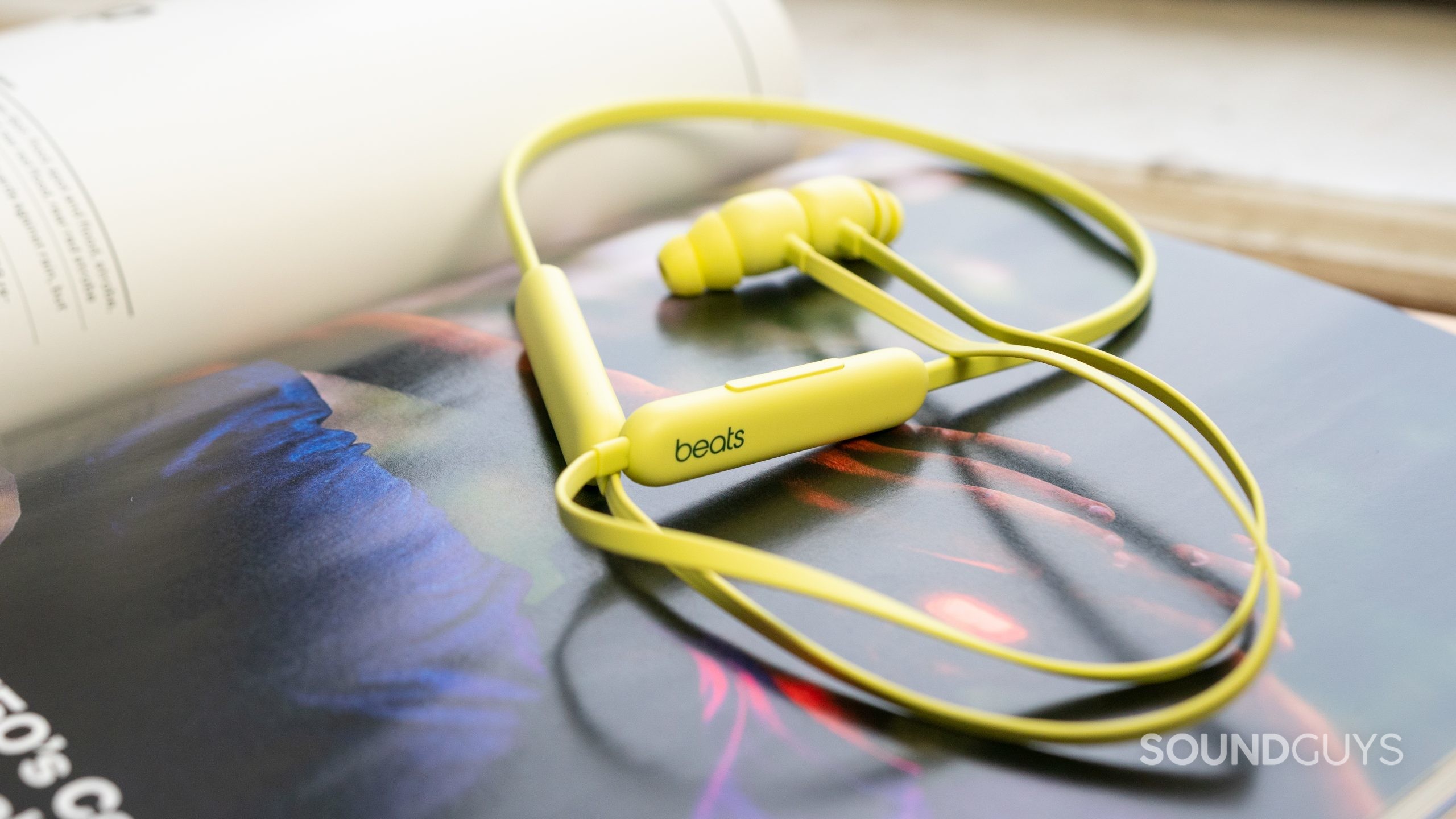
The Beats Flex is one of the cheapest entries into the Apple ecosystem, with the W1 chip for solid integration with iOS devices, such as hands-free access to Siri, improved battery life, and seamless device switching. You can also use the Audio Sharing function with other Beats and AirPods products.
According to our battery life tests, you get 10 hours and 24 minutes. If you’re low on juice, 10 minutes of charging yields 90 minutes of playback. The Beats Flex uses a USB-C cable for charging, keeping it up to date. Those looking at exercising might want to exercise caution with this set because it lacks sweatproofing. The whole set weighs merely 18.6g which is lightweight indeed. Its onboard sound under-emphasizes treble notes, leaving you with a more bass-focused sound, which might be your preference if you’re a Beats fan.

For clean design and convenience, go with the LG Tone Style SL5
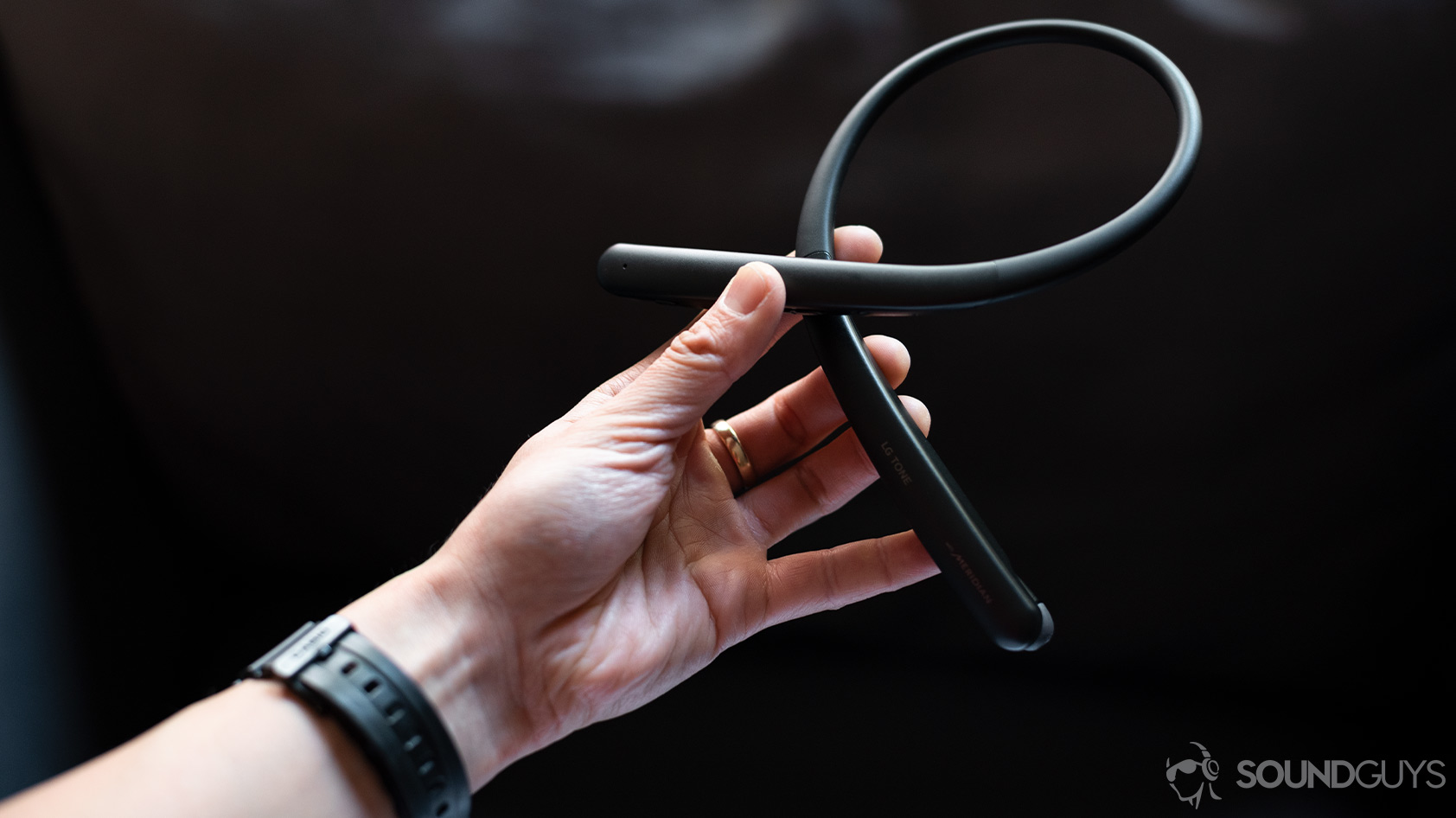
The LG Tone Style SL5 neckband earbuds are a solid choice for consumers seeking reliability and simplicity. One of the highlights of this headset is its retractable earbuds, offering convenience and reducing the risk of loss. It provides exceptional battery life, exceeding LG’s promised playback time, and offers quick charging capabilities. Utilizing Bluetooth 5.0, these earbuds are quick to connect and allow multipoint functionality, enabling connection to two devices simultaneously. The design is sleek and comfortable for most users, although the thin cables and lack of a variety of ear tips may be an issue for some.
Regarding audio quality, the Tone Style SL5 earbuds, tuned in partnership with Meridian Audio, favor vocal frequencies, which could appeal to users who prioritize clarity in this range. The headset may not be the best fit for those seeking powerful bass or effective noise isolation, but it does offer a fairly balanced sound signature for general listening. Despite the limited support for high-quality Bluetooth codecs and an average microphone, this budget-friendly device maintains its appeal through solid performance and handy design features.

Get Sony 360 Reality Audio for under $50 with the Sony WI-C100
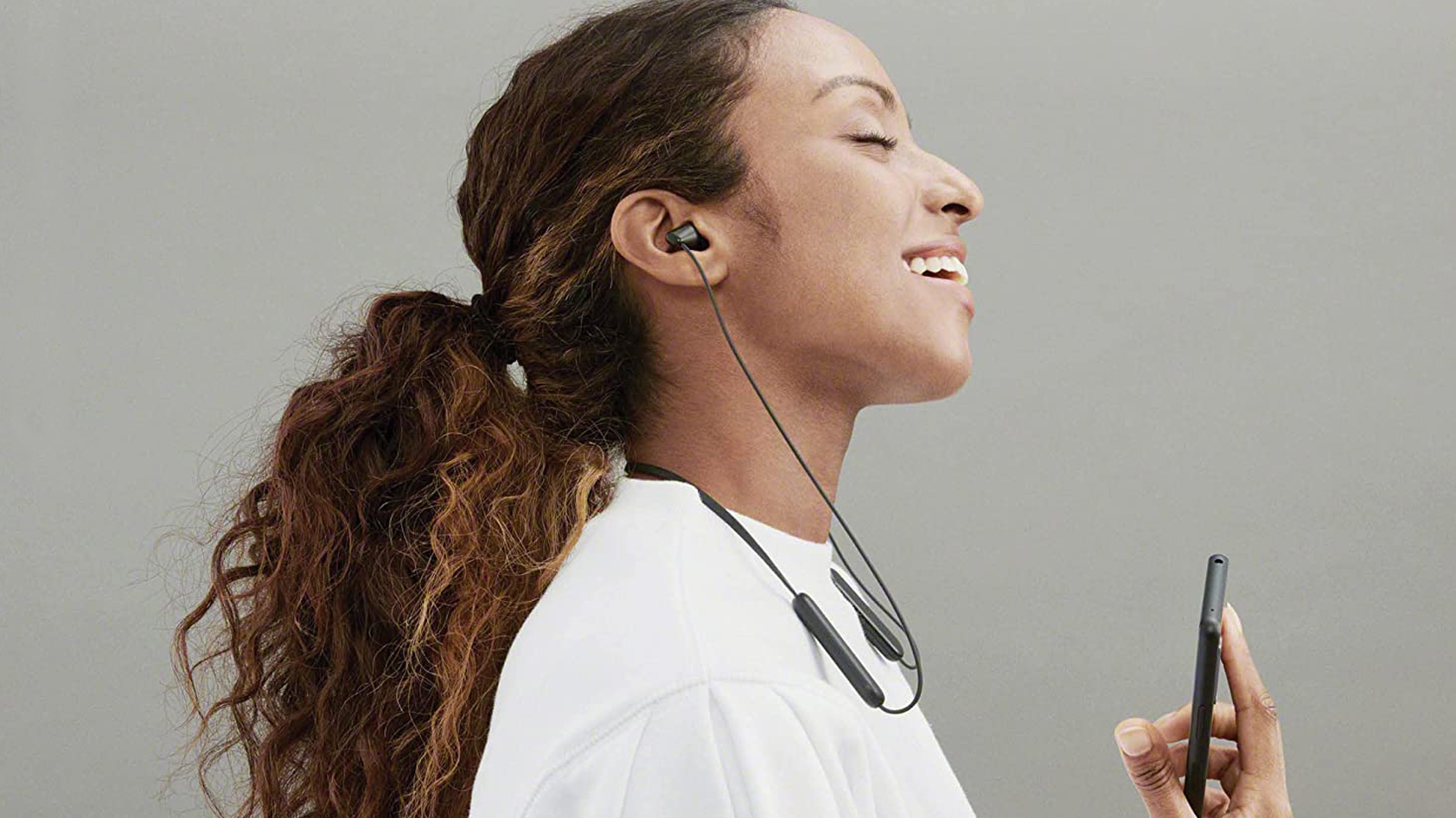
Ordinarily, affordable neckband earbuds don’t have many features, but the Sony WI-C100 has some surprising tech for not much money. You can get surround sound (also known as Sony 360 Reality Audio, spatial audio, and a litany of other names) on the WI-C100. In addition, Sony upgrades the audio with DSEE, Sony’s in-house digital signal processing (DSP), to improve sound quality over Bluetooth with compressed audio formats.
Like the Sony WF-1000XM4 and other premium Sony earbuds and headphones, you get some of the benefits of the Headphones Connect app, like EQ settings. With an IPX4 rating, you can take the WI-C100 to most places without worrying about sweat or a couple of raindrops. Sony rates the neckband earbuds as having 25 hours of battery life, and a 10-minute charge also yields an hour of extra audio. It charges via the current USB-C standard, although some have reported it doesn’t ship with the cable. It’s a promising deal, even if you’re just curious about spatial audio but don’t want to commit the big bucks.
The Sony WI-1000XM2 is our premium pick
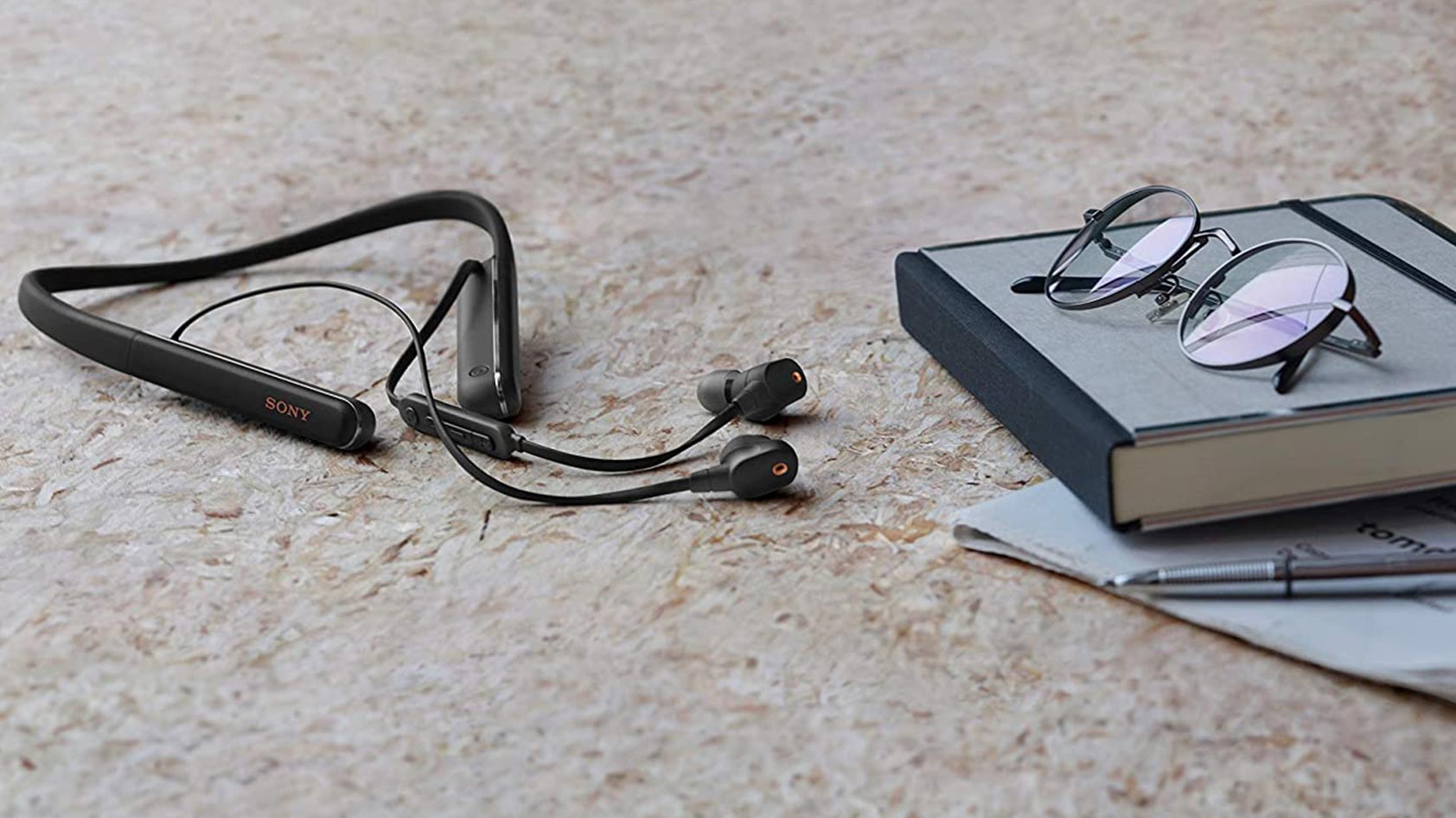
The Sony WI-1000XM2 Wireless earbuds have earned a reputation as a high-end choice in the realm of neckband earbuds. As the upgraded version of the Sony WI-1000X Wireless, they deliver enhanced controls and a more flexible neckband. They feature great noise cancelation, thanks to Sony’s HD QN1 Processor, a flexible neckband to stay comfortable throughout the day, and a built-in microphone for hands-free calls.
They offer a long-lasting battery life of up to 10 hours, with a quick charge feature that gives you 80 minutes of playtime in just 10 minutes. Alexa-enabled for easy voice access and equipped with smart features that adjust the ambient sound to your activity. Plus, with the Sony Connect app, you can customize the sound profile with the EQ and presets.
The neckband includes different earbud sizes, a carrying case, an in-flight plug adaptor, and USB cables. Overall, the Sony WI-1000XM2 Wireless earbuds offer a well-rounded blend of comfort, convenience, and impressive sound quality.
Best wireless neckband earbuds: notable mentions
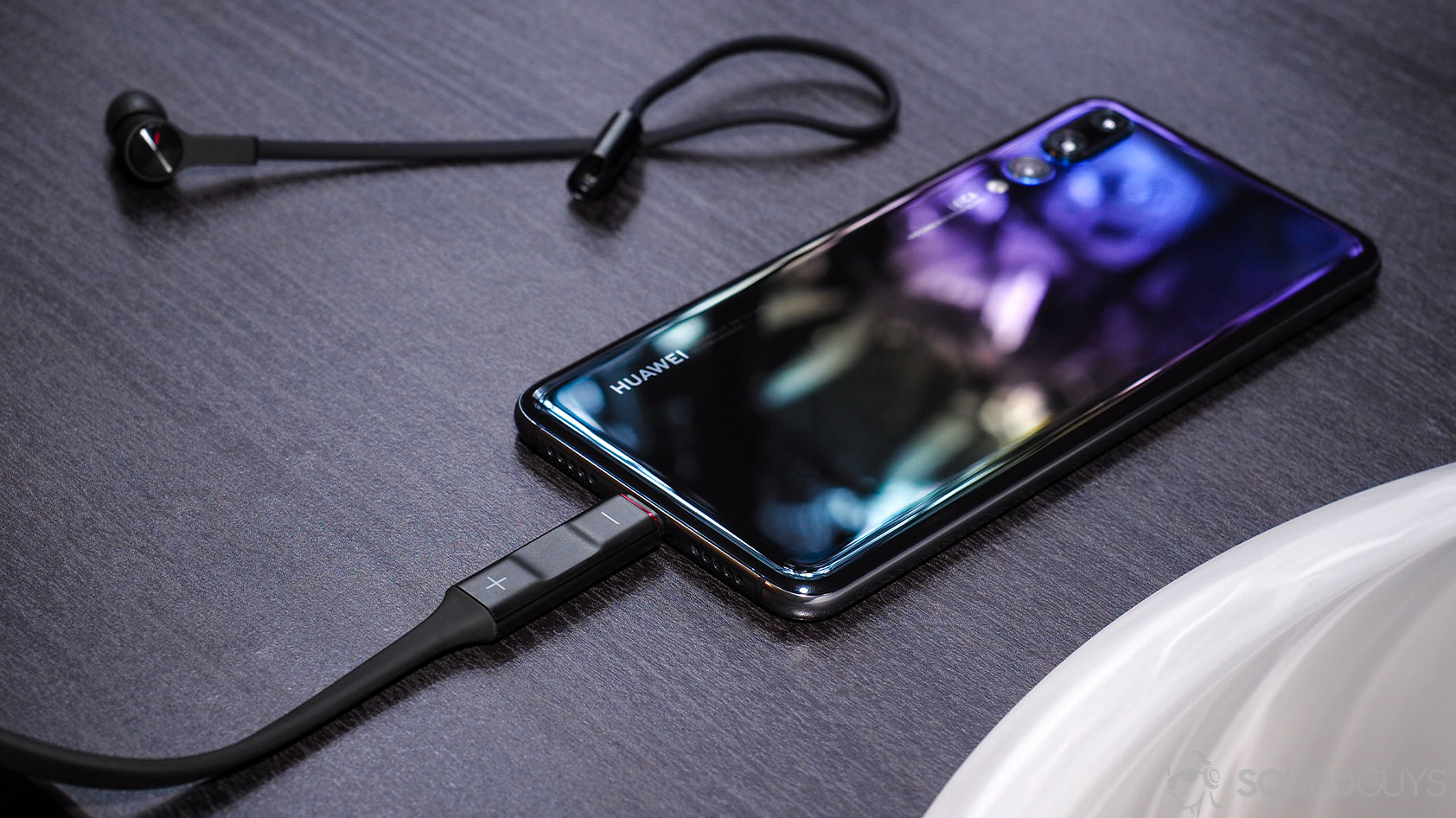
- Jabra Evolve 65e ($83.16 at Amazon): Renowned for its superior mic system, this neckband is ideal for calls, music, and even gym use, thanks to its IP54 rating. Its 13-hour battery life caters to long days and features special Unified Communications and Microsoft-certified versions for enhanced compatibility with platforms like Skype. Although it may not completely filter low-frequency noise like the Sony WI-1000XM2, its noise canceling capabilities significantly reduce high and mid-frequency sounds.
- Sennheiser CX 150BT ($67 at Amazon): Sennheiser strikes a balance between elegant and utilitarian with the Sennheiser CX 150BT. You won’t get any flashy Bluetooth codecs besides the standard AAC and SBC, but you will get that reliably good Sennheiser sound quality. The CX 150BT charges via USB-C and can connect to two devices simultaneously—great for working. Speaking of working, the in-line mic and remote let you answer calls, hang up, and mute calls, in addition to media playback controls.
- LG Tone Flex XL7 ($99 at Amazon): The LG Tone Flex XL7 is a top-end wireless neckband headset. It can upscale low-resolution files to 32-bit high-res audio for optimal streaming quality. Meridian Audio Technology results in a neutral-leaning frequency response that bodes well for nearly all music genres. This is a stylish pick if you want a wireless headset with few compromises.
- House of Marley Uplift 2 Wireless ($24 at Amazon): Environmentalists may be drawn to these earbuds constructed from recycled materials or fans of more bassy frequency responses.
- HUAWEI FreeLace Pro ($128.57 at Huawei): These earbuds can be charged directly from your phone, assuming it has a USB-C input. Depending on where you live, it might be difficult to track these down.
- Jabra Elite Active 45e ($349 at Amazon): These workout earbuds are a good alternative to bone-conduction headphones because they’re designed to allow outside noise in while still resting in the ear.
- JLab JBuds Pro Wireless Signature ($2199 at Amazon): For not much money, this no-frills set of earbuds comes in seven colors and makes a good backup pair of buds, or for roughing it with its IP55 rating against dust and moisture, and optional stabilizers. You’ll need to deal with micro-USB charging, however.
- Sennheiser IE 100 PRO Wireless ($149 at Amazon): This set is unusual in that it can play as a standard set of wireless neckband earbuds, or you can swap out the Bluetooth module for the included cable for wired listening. Its sound quality is excellent, but it doesn’t have an IP rating.
- Skullcandy Ink’d+ Wireless ($37.82 at AliExpress): We aren’t saying these discontinued earbuds are perfect. However, Skullcandy typically delivers a reasonably finished product, and the discounts might be worthwhile. Be aware that it is not waterproof.
What you should know about neckband earbuds
What is a Bluetooth codec, and which is best for iPhone and Android?
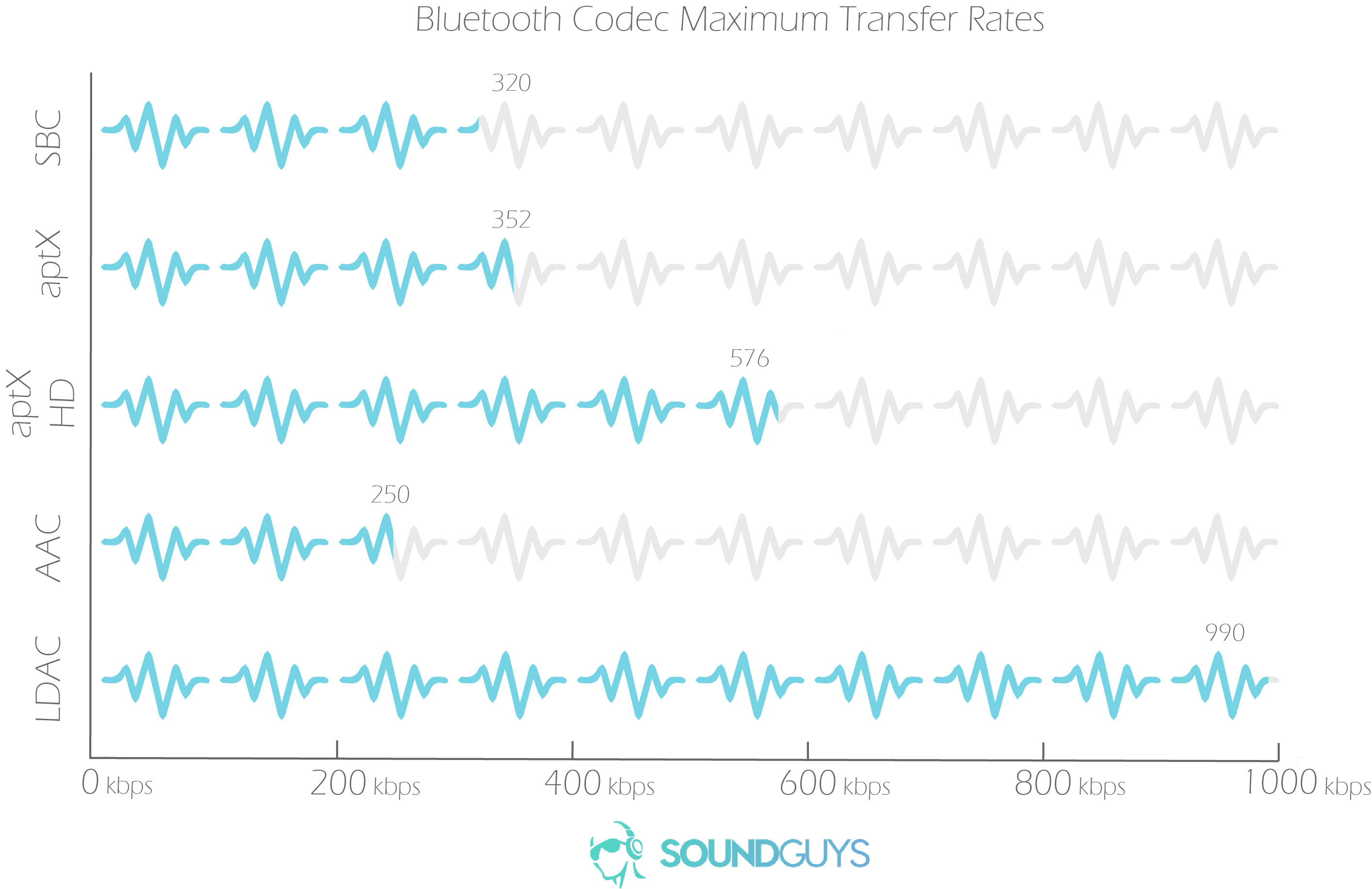
All wireless earbuds feature Bluetooth codec support. Bluetooth codecs inform how a file is transferred from the source to a headset. It encodes and decodes digital audio data into a specified format while balancing quality and efficiency. The bare minimum requirement is SBC compatibility. Over the years, its performance has improved immensely, but Android users who value audio quality should watch for aptX or aptX HD support. If you’re an iPhone user, the AAC codec works well and reliably, which can’t be said for Android devices. You’ll have to go with wired listening to get the absolute best audio quality.
Why does your music sound bad?
A good fit can dramatically improve audio quality: it improves isolation, which immediately affects bass response. If earbuds don’t fit well, it’s a severe detriment to audio quality because you’re not properly isolated from the environment.
When you can hear external noise, your music degrades due to auditory masking. This is when the louder outside noise makes it more difficult to perceive the quieter sounds of your music. Situations like this put you at risk for noise-induced hearing loss because you’re more likely to pump up the volume in such instances. Getting a proper fit can be an easy way to help prevent auditory damage. Not all ear tips are created equally, though, which is where third-party tips can be helpful.
Wireless vs true wireless earbuds: Which is better?
True wireless earbuds have no wires attached to them at all, whereas wireless and wireless neckband earbuds have a wire connecting each earbud to the other.
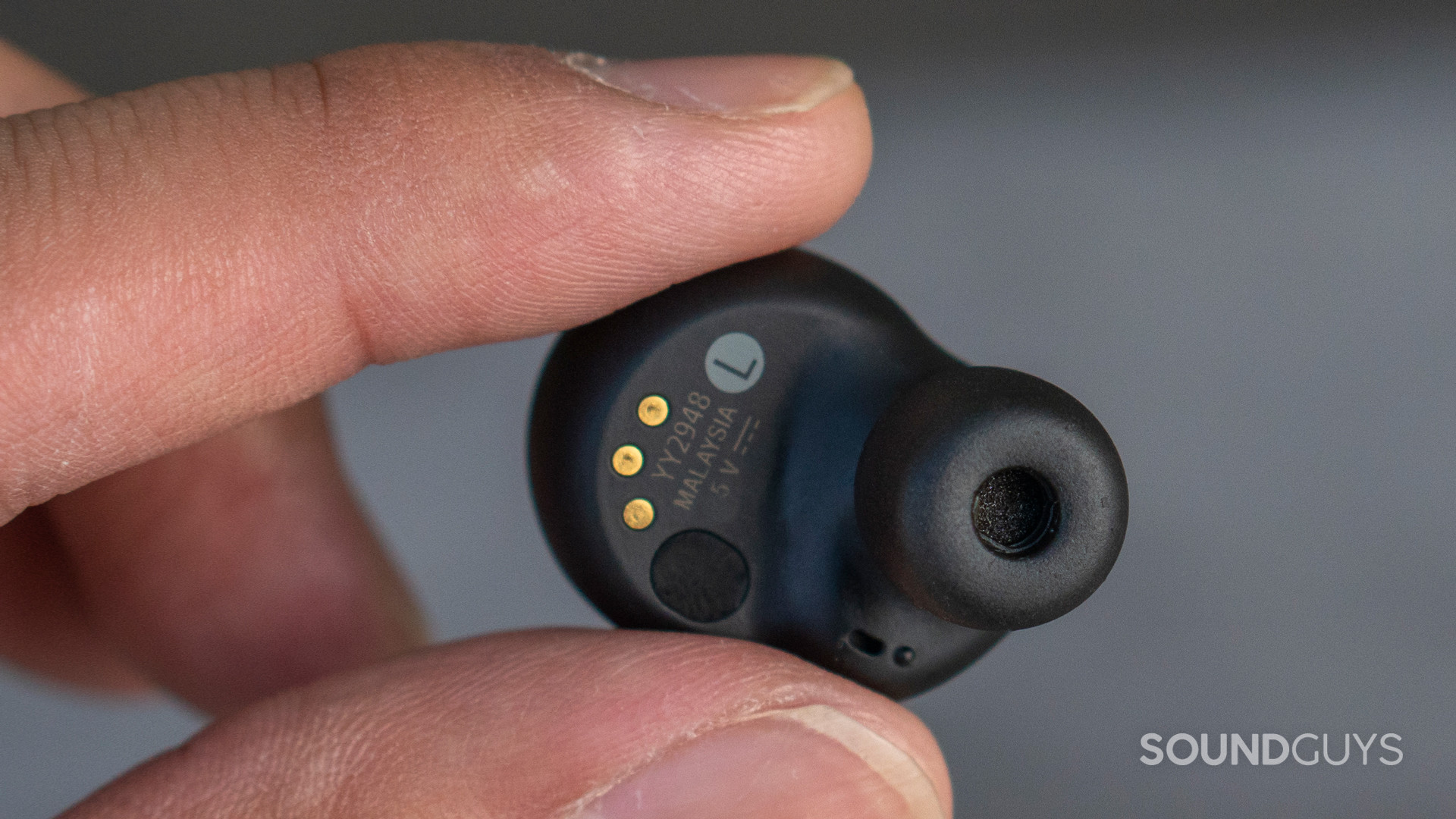
If you follow the changing world of consumer audio, you’re already well aware of how pervasive true wireless technology has become. In fact, it’s advanced so much that sub-$100 and sub-$50 options are aplenty. There are even extremely premium options abound, like the Sony WF-1000XM4 and Jabra Elite 85t, both of which are great alternatives to the Apple AirPods Pro.
This doesn’t automatically render standard wireless options outdated. Quite the contrary, these remain a great compromise pick for listeners who don’t want to deal with finicky, truly wireless connectivity or worry about losing an earbud.
True, there’s been a noticeable decline in wireless neckband earbud releases, but you can often find great performers on promotion to entice consumers. Standard wireless earbuds are the way to go if you’re unsure about true wireless tech and want something reliable and with better battery life.
What does IPX4 mean?
IP ratings can be confusing, and the bare minimum of what you should look out for if you plan to perform any intense exercise with any neckband earbuds is an IPX4 rating. Anything IPX7 and up can withstand complete submersion; the number determines duration and depth. Products rated IPX6 and below cannot go underwater. However, they can withstand varying degrees of water sprays.
If you want wireless earbuds for swimming, you’ll need a pair with onboard storage. Bluetooth connection strength isn’t great enough to carry a signal underwater.
How we chose the best neckband earbuds
We performed hands-on tests for each of our picks, including battery life, frequency response, and isolation. Aside from objective testing, though, we contextualized the price of each product and considered that with its given features. While we understand that our picks may not please everyone, we feel they’ll please most listeners.
Why you should trust SoundGuys
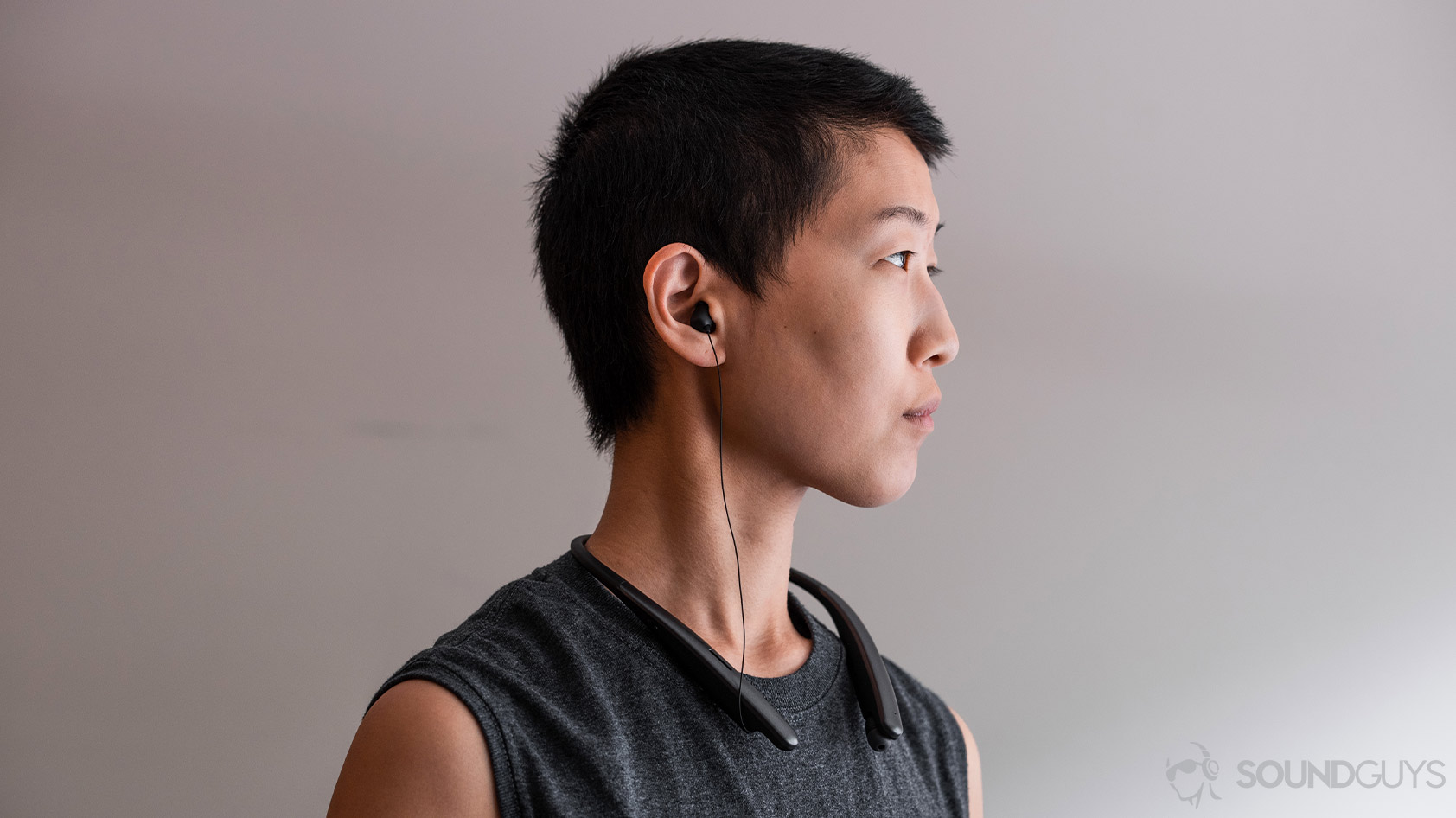
SoundGuys aims to inform and educate its readers as much as possible. From providing information relevant to a given best list to improving your understanding of audio science, we aim to make audio an accessible topic for our readers.
While this site does operate on referral links, no writers may benefit from highlighting one product over another. We want you to be happy with your purchase if you do make one, and if not, we want you to close out of this table feeling like you’ve learned a thing or two about the inner workings of audio.
FAQs
There isn’t one, really. Some people prefer this style because it’s more secure around your neck than normal wireless earbuds, and they’re a little harder to lose.
The Beats Powerbeats Pro and Jaybird X4 are built very differently. The former uses an ear hook design to stabilize the ‘buds around the back of the ear. In contrast, the latter uses wing tips attached to the base of the nozzles to create friction along the contours of the outer ear. Jaybird uses an in-line module to house the microphone and playback/volume controls, but Beats integrates these things into and on the housings. It depends on what you prioritize and what kind of fit you enjoy. If battery life is even a slight concern, go with the Powerbeats: they double the X4 battery life.
The Beyerdynamic Blue BYRD (2nd gen) tops our list for the best neckband earphones. They offer high-quality audio streaming, a comfortable design, and nearly 12 hours of battery life.
Neckband headphones are perfect for those who prefer a more secure and comfortable alternative to traditional wireless or true wireless earbuds. Thanks to their comfortable fit and wireless features, they’re suitable for various activities, from daily commuting and office work to workouts.
For a budget-friendly neckband that doesn’t skimp on features, we recommend the Sony WI-C100. It comes packed with features like Sony 360 Reality Audio and DSEE for improved sound quality over Bluetooth, all for an affordable price.